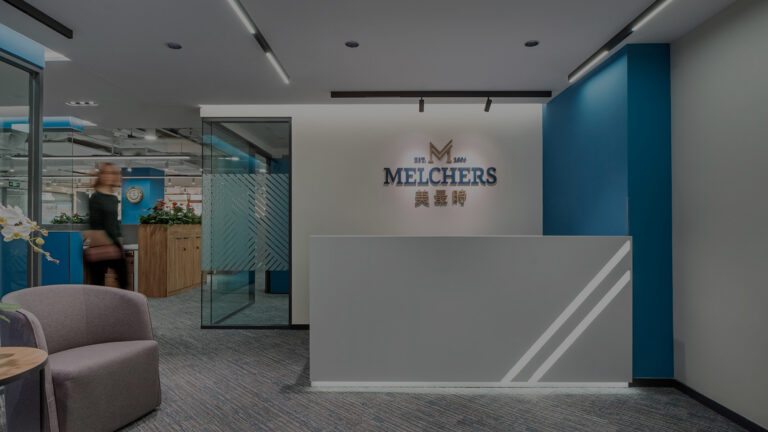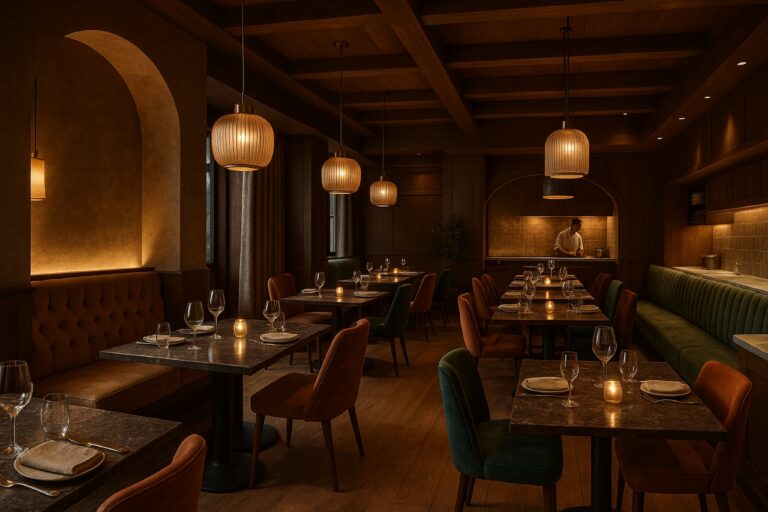Concept stores have become one of the most prominent tools in the past years to accelerate brand growth and boost awareness. Traditionally these stores were a natural extension to the brand by presenting a lifestyle feeling and inspiring customers to turn that lifestyle into a reality. Nowadays, concept stores have often become a brand experiment with spaces that stand out from the retail portfolio and reinvent the brand. Partially, this is the answer from brands to the ever-changing shopping habits of consumers. In this article we will introduce the idea behind concept stores, how they can be an integrated as part of the retail strategy and present some examples from our previous projects.
How To Define the ‘Concept’ of Concept Stores?
A concept store is a retail experience that seeks to engage with customers through a branded environment with excellent service and storytelling. Customers can not only learn about the products but they are also invited onto a journey. They can see what the brand can offer, what the brand values are, and what those values stand for. When done correctly, concept stores can bring new ideas to life while creating an inspiring customer journey and shopping experience. They can appear in many different sizes, formats, and styles whether it is with the integration of an immersive art display, unique design, theatre, cinema, events, cafés or, the application of AI.
Communication is the key for the brand as they have to communicate their values through this medium. Usually, there is an objective at the center of the concept store, like sustainability, food & drink, design, games, sports, or creativity. That serves as the heart of the message and is used to create a strong association with the brand. It can produce a competitive advantage and differentiate the brand from the competitors or even from earlier values.
When it comes to luxury brands, creating an engaging and immersive customer experience is even more important because consumer expectations are higher than in any other sector. In-store customer experience, service, home delivery, and the complete online journey must be perfect and exceed customers’ expectations.
Our first example is a store identity design concept for both flagship stores and shop-in-shops in China for the Finnish brand Halti. The space had to subtly showcase the brand’s Scandinavian origins and long history. To achieve that, a central brand wall was created to tell the story of Halti origins. Inside the flagship store, a suspended ceiling with backlit topographic lines was placed since this topographic imagery is an essential part of Halti’s brand identity.
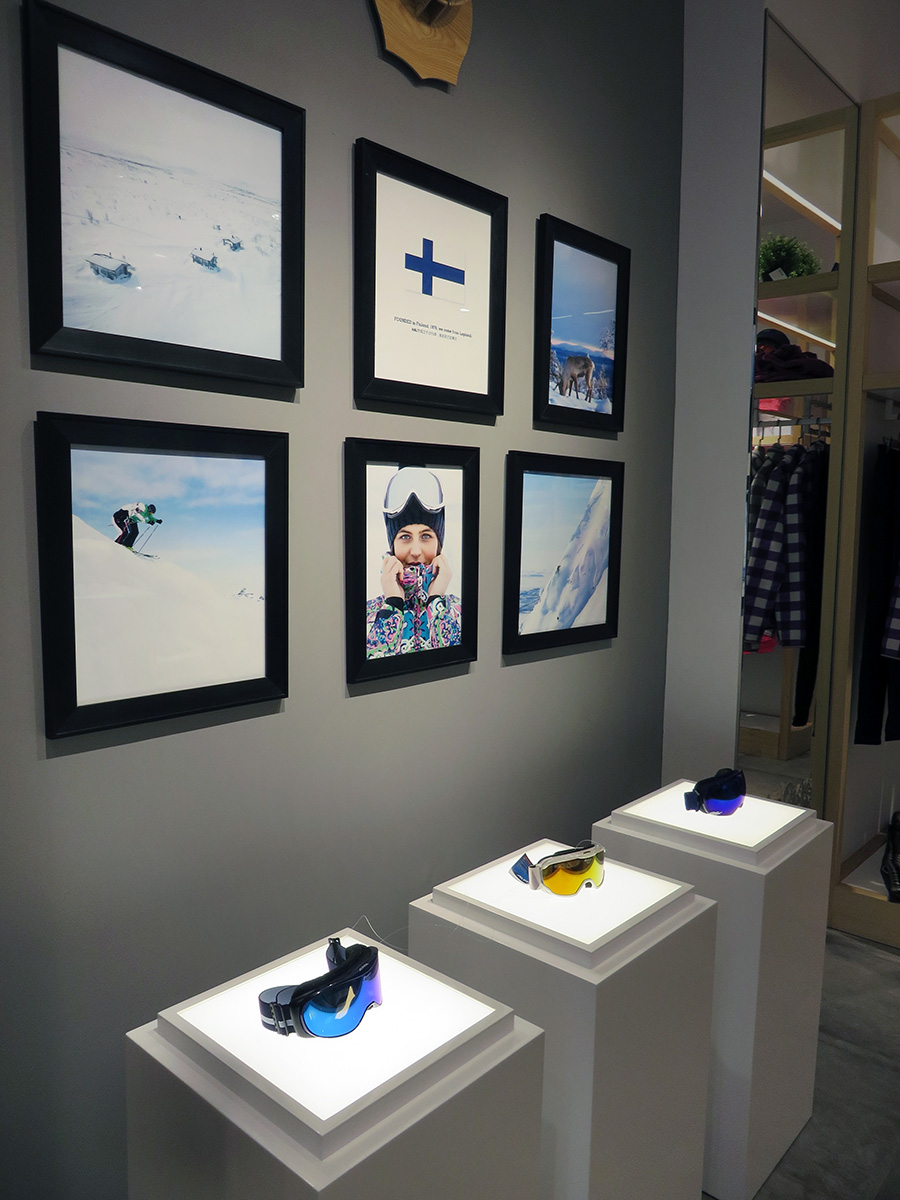
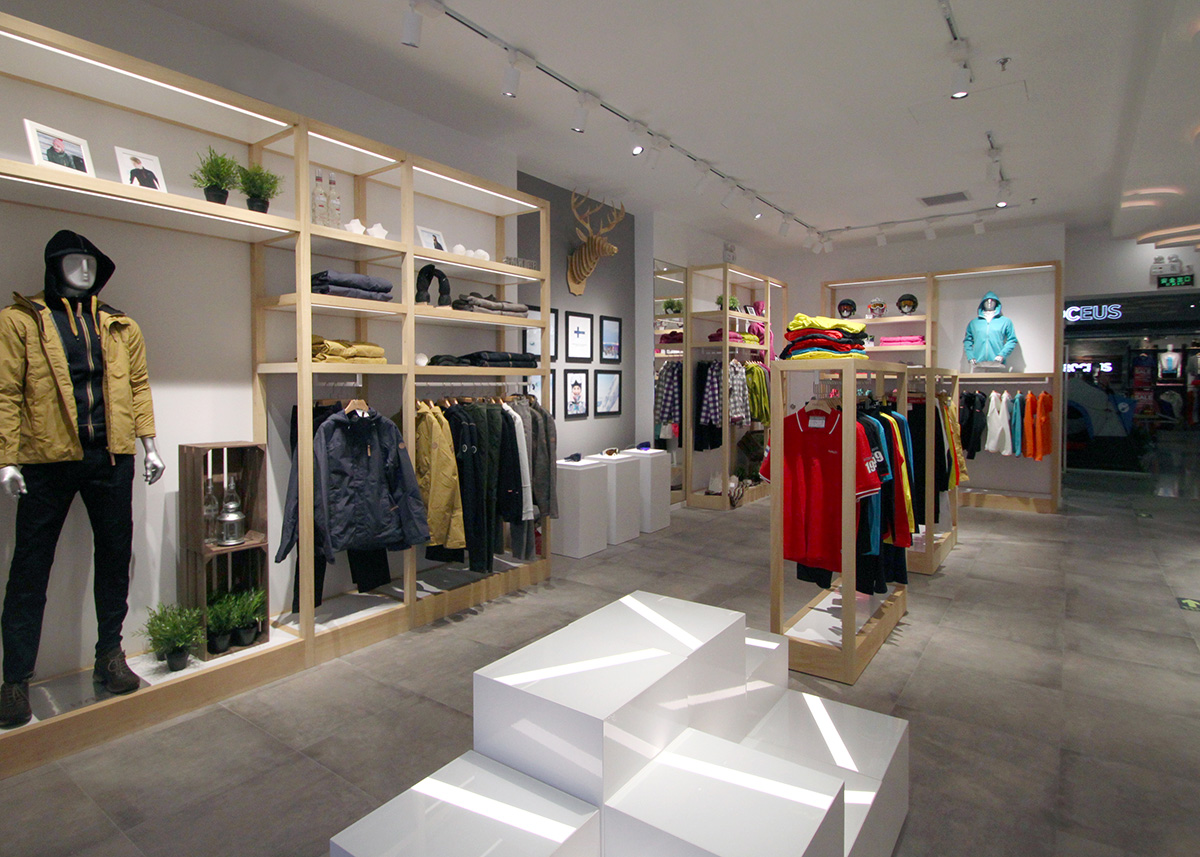
Another example from China is the KJUS flagship store where we used a completely different style and approach compared to the existing stores in Europe and the US. Originally, KJUS stores use a large amount of wood but for China, we wanted to create a more modern, technological feel. We did apply wood on a smaller scale like back panels and high-rack equipment help to draw a connection to the Swiss-born brand. Another important aspect to create a luxurious touch was to ensure that there was enough space in the store and display only a selected amount of SKUs. To feature the key products, collections, and their characteristics we used special lighting effects and technological advancements. The flagship store includes multiple areas such as a VIP lounge area serving high-quality coffee, a display space, storage, fitting rooms, and more.
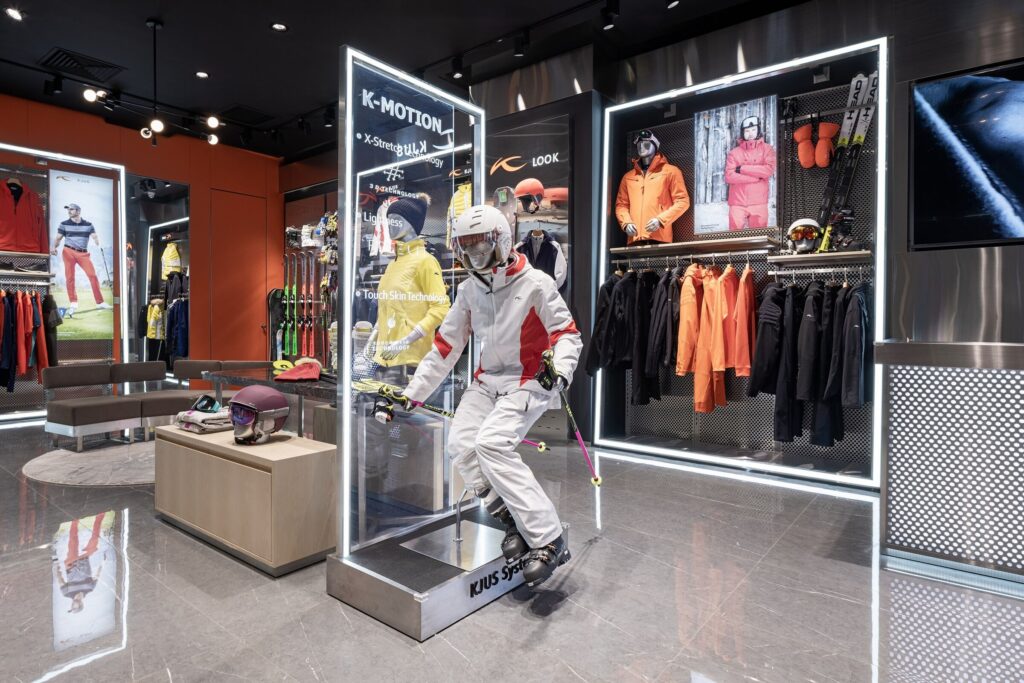
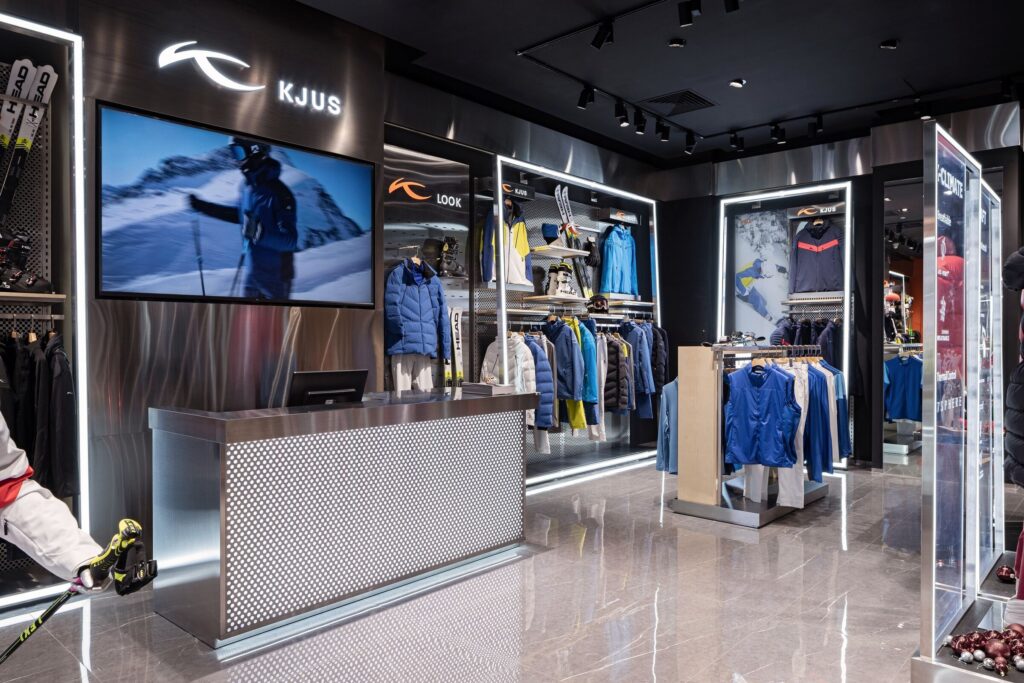
What Speaks Against Concept Stores?
With the rise of online sales and the following decline of brick-and-mortar stores, brands face a significant challenge: how to engage with the most demanding generation of consumers, how to use their physical stores to support their online sales, and how to build loyalty.
From a traditional sales-driven point of view, since concept stores present a smaller product range (this is, a smaller amount of SKUs), they generate less direct sales transactions and income. It is also difficult to measure the ROI. How do you prove that the ‘concept’ is working if sales aren’t higher? Brands require testing following the concept store’s opening to see if anything has changed the perceptions of the brand, which adds an extra cost to the project.
The Connection Between Online and Offline, and the Halo Effect
A well-known approach is that online and offline must blend into one, offering an on-brand experience wherever the customer is. The brand has to make sure that they have enough engagement touchpoints with their customers online and offline.
According to a study by the International Council of Shopping Centres (ICSC) from a few years ago, there is an interaction between online and offline channels, which is called ‘The Halo Effect’. The key outcome of the study was the realization that bricks-and-mortar stores serve as the hub of a brand feeding and supporting the rest of the online channels. They found out that every time a new store opens, its brand’s website traffic increases by 37%, and when a store closes, website traffic falls accordingly. That shows how strong the connection between online and offline sales is.
Our third example is Hanna Trachten, an Austrian traditional clothing brand. We created a store design concept for their three-story flagship store in Salzburg. Providing a journey of brand discovery, its heritage, and local nature was the key requirement when developing the retail design concept. While the brand is positioned in a traditional retail sector, the fabrics are innovative, the in-house designed patterns are colorful, and the cuts are modern and stylish. The result is a concept store that is welcoming, elegant and has a modern feel to it.
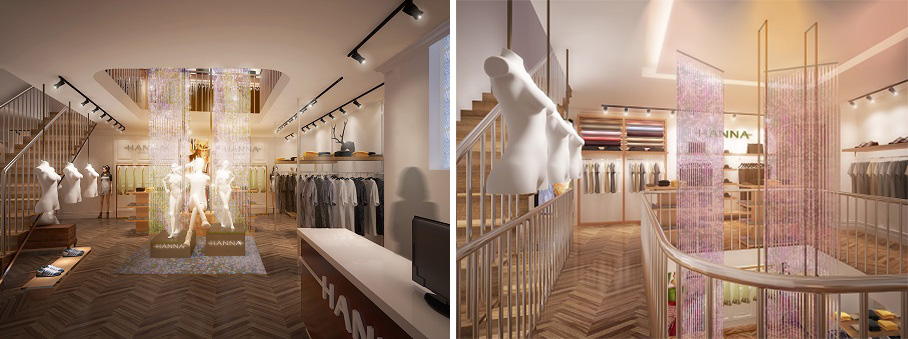
Our last example is a design concept that we created for H?gl for the Chinese market. The design was based on the brand identity – feminine, high quality, and comfortable, as well as the incorporation of the white and red brand colors. The design concept also fulfills the targeted positioning within the Chinese market, defined as stylish, chic, cool, sexy, and powerful. The developed concept identity design was also used for the design for flagship stores, boutiques, and shop-in-shops.

When looking at the advantages and difficulties of concept stores, it’s safe to say that they have an essential role in the retail universe and still have a lot of potential when it comes to engaging, educating, and entertaining their visitors. Concept stores provide customers with the opportunity to have an experience that they cannot have anywhere else, and particularly not online.


